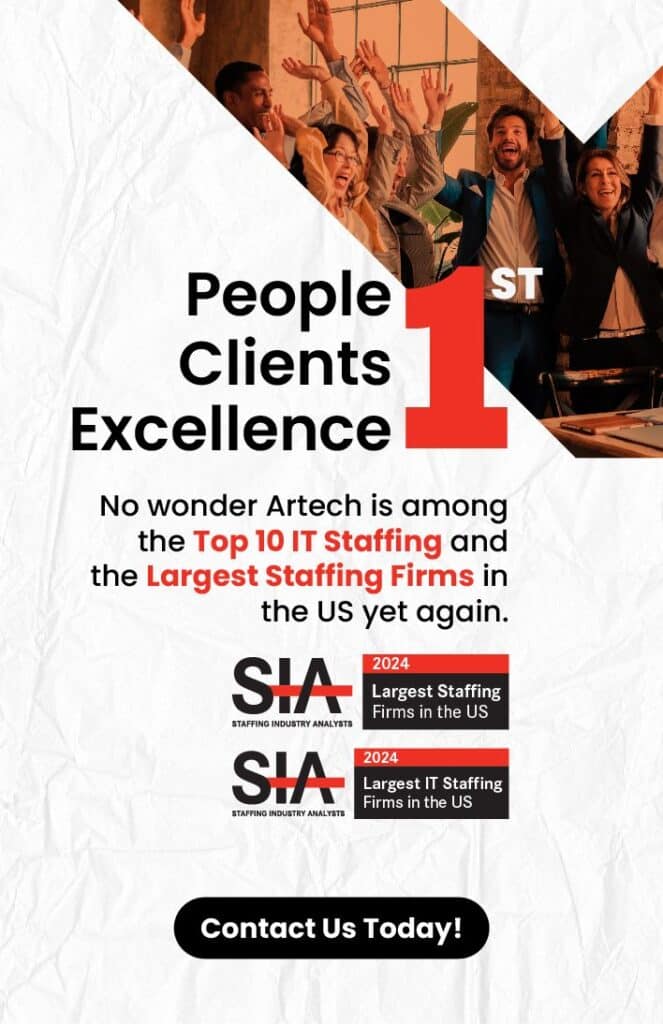
As workforce strategies evolve, modern businesses are reevaluating how they construct agile and efficient teams. Full-time hiring is no longer the default. Contingent staffing—encompassing contractors, freelancers, and consultants—is rapidly gaining traction as a smart way to fill skill gaps and adapt quickly to changing business demands.
Whether you’re a hiring manager, HR professional, or business leader, understanding the pros and cons of both models can help you make more strategic workforce decisions.
Full-Time Hiring: Stability, Culture Fit, and Long-Term Growth
Full-time employees have long been the foundation of strong organizations. They’re invested in your mission, integrated into your culture, and drive long-term growth.
Why Full-Time Hiring Still Matters:
- Organizational Alignment: Full-time employees build loyalty and contribute to your company’s vision and long-term strategy.
- Knowledge Retention: These employees gain a deep understanding of your processes and pass that knowledge on, ensuring continuity.
- Team Synergy: With greater alignment and collaboration, full-timers foster trust and strong team dynamics over time.
Additional Benefits:
- Stronger Mentorship: Full-time employees can mentor junior team members, helping to build internal talent pipelines.
- Cross-Training Opportunities: Full-time employees often gain broader exposure across departments, thereby improving organizational resilience.
Challenges of Full-Time Hiring:
- Higher Cost Structure: Salaries, benefits, training, and compliance add up.
- Longer Hiring Cycles: Full-time recruitment involves more steps to assess skill and culture fit.
- Reduced Agility: When project demands shift, it’s harder to scale or pivot with a fully permanent workforce.
Best Use Cases:
- Mission-critical, core business functions
- Roles requiring deep cultural integration
- Long-term initiatives with evolving responsibilities
Contingent Staffing: Speed, Flexibility, and Access to In-Demand Talent
Contingent staffing is becoming a dominant force in workforce strategy, in many sectors such as IT, healthcare, and digital services.
Why Contingent Staffing Works:
- Speed and Scalability: Hire based on project duration, urgency, or skill requirements.
- Specialized Skills: Access niche expertise in areas like AI, cybersecurity, data engineering, or cloud migration.
- Lower Costs: Reduce overhead by paying only for services rendered—no benefits, no long-term contracts.
Additional Advantages:
- Global Access: Companies can source global talent, enhancing diversity and 24/7 productivity.
- Trial Before Commitment: Businesses can evaluate a contractor’s performance before committing to a full-time conversion.
Key Challenges:
- Continuity Risks: Contractors often exit post-delivery—knowledge transfer can suffer.
- Compliance Complexity: Proper classification, taxation, and cross-region compliance require expertise.
- Cultural Disconnect: Contractors may not fully integrate with internal teams.
Best Use Cases:
- Fast-moving innovation or product launches
- Projects needing specific certifications or tools
- Seasonal or demand-driven work (e.g., audits, migrations, rollouts)
Full-Time vs. Contingent: Side-by-Side Comparison
| Factor | Full-Time Hiring | Contingent Staffing |
| Cost | Higher (includes benefits & onboarding) | Lower (project-based or hourly pay) |
| Speed to Hire | Slower (multi-step process) | Faster (via staffing firms or freelancers) |
| Flexibility | Low | High |
| Expertise Depth | Generalist, long-term upskilling | Specialist, short-term impact |
| Team Integration | Strong (aligned to company culture) | Moderate (depends on engagement length) |
| Onboarding Time | Longer, but supports career progression | Minimal ramp-up needed |
When to Choose Full-Time
- You need consistent leadership or strategic oversight
- The role requires cultural alignment and cross-functional collaboration
- You’re investing in developing internal capabilities for future growth
- You plan to grow in a regulated industry requiring workforce stability
When to Choose Contingent
- You need to deliver results quickly with niche skillsets
- The workload is seasonal, short-term, or fluctuating
- You’re exploring new technologies and need temporary expertise
- You want to test capabilities before scaling a new team
Why Hybrid Staffing Is the Future
You don’t need to choose one model. A blended staffing strategy lets you:
- Stay agile while retaining expertise
- Scale up without long-term liabilities
- Test new skills before committing to a full-time hire
- Optimize costs while staying competitive
Organizations that combine core full-time teams with contingent talent often outperform peers in project delivery, time-to-market, and operational cost control.
Real-World Use Case: IT Transformation on a Timeline
A global financial services company needed to migrate over 50 applications to the cloud within six months. Hiring full-time engineers would’ve taken too long. Instead, they partnered with a staffing firm to onboard 20+ cloud specialists on 3–6 month contracts. The Result? The project was completed on time and saved 30% in costs versus a fully permanent team.
The team also built reusable infrastructure templates, shortening future rollout times by 40%. With reduced long-term liabilities and successful delivery, the client retained several contractors as full-time leads.
Extended Insights: Considerations Beyond Hiring
When building your workforce strategy, also think about the following:
- Training Investment: Full-time employees often require ongoing development programs, whereas contingent workers may come ready to go with updated certifications.
- IP Protection: Projects involving proprietary technology or customer data may demand the oversight and confidentiality safeguards offered by full-time teams.
- Team Morale: Striking the right balance avoids resentment or burnout among full-time staff when contingent roles are misused.
- Workforce Planning: Integrating both staffing models requires robust planning to ensure performance tracking, effective communication, and seamless knowledge sharing across the organization.
Final Thoughts: Build Based on Business Goals, Not Hiring Habits
There’s no universal rule for hiring. The best workforce strategy is one that aligns with your business goals, budget, and delivery timeline.
Utilize full-time hiring to establish depth, consistency, and a strong culture.
Leverage contingent staffing for speed, adaptability, and specialized work.
Or combine both for a hybrid model that gives you the best of both worlds.
Ready to Build a Future-Ready Workforce?
Let Artech help you design a hybrid staffing model that’s agile, efficient, and aligned with your business strategy.
Explore Artech’s Workforce SolutionsFAQs
Can contingent workers be converted to full-time?
Yes. Many companies use contract roles to assess a candidate’s fit before making a permanent offer.
Is contingent hiring risky from a compliance standpoint?
Only if mismanaged. Partnering with a vetted staffing agency ensures proper worker classification and documentation.
Which industries use contingent staffing?
Beyond IT, sectors such as healthcare, marketing, and finance are now utilizing contingent models to fill niche roles quickly.
This content is crafted with care by Artech Staff Authors. While it reflects our commitment to quality and accuracy, please note that it is not authored by industry experts. We aim to offer valuable and engaging information, and for more specialized or technical advice, we recommend consulting with professionals in the relevant field. If you have any concerns or require further assistance, please contact us at support@artech.com. Thank you for trusting Artech as your source of informative content.








